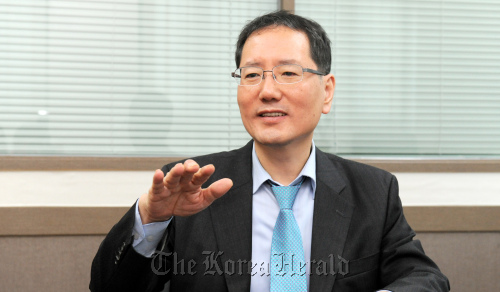Digital hospitals may be new to some people, but they are the next growth engine for Korea following the semiconductor and shipbuilding industries, according to first-generation venture icon Lee Min-hwa.
Lee, who is serving as the chief of the Korea Digital Hospital Export Agency, told The Korea Herald that the agency has set an ambitious target ― raising $100 million in digital hospital exports by 2015.
Since this March, Lee has been spearheading a group composed of a total of 74 members, including hospitals, medical device makers, medical IT system manufacturers and construction firms. Samsung Medison, Vatech, Seoul National University Hospital, BIT Computer and Dasan Networks.
Exports of Korean hospitals to developing countries have high potential thanks to the country’s advanced information technology, he said.
“The Korean doctors are highly skilled, the nation’s IT sector is well-advanced and country is equipped with good medical skills,” Lee said. “This indicates that the convergence of medical skills and IT makes a good picture. But Korean doctors are expensive, so it cuts down on their competitiveness in other countries.”
Lee’s description points to the introduction of a digital hospital, an IT-based hospital which collects and stores all medical information such as patients’ medical records and doctors’ instructions electronically for communication.
“The building of such a hospital is 15 percent more expensive, but 30 percent more efficient when looking closely into local hospitals,” said Lee.
Lee, who is serving as the chief of the Korea Digital Hospital Export Agency, told The Korea Herald that the agency has set an ambitious target ― raising $100 million in digital hospital exports by 2015.
Since this March, Lee has been spearheading a group composed of a total of 74 members, including hospitals, medical device makers, medical IT system manufacturers and construction firms. Samsung Medison, Vatech, Seoul National University Hospital, BIT Computer and Dasan Networks.
Exports of Korean hospitals to developing countries have high potential thanks to the country’s advanced information technology, he said.
“The Korean doctors are highly skilled, the nation’s IT sector is well-advanced and country is equipped with good medical skills,” Lee said. “This indicates that the convergence of medical skills and IT makes a good picture. But Korean doctors are expensive, so it cuts down on their competitiveness in other countries.”
Lee’s description points to the introduction of a digital hospital, an IT-based hospital which collects and stores all medical information such as patients’ medical records and doctors’ instructions electronically for communication.
“The building of such a hospital is 15 percent more expensive, but 30 percent more efficient when looking closely into local hospitals,” said Lee.

He elaborated that the digital hospital could treat 30 percent more patients compared to hospitals of same size since its IT infrastructure enables transmission of digitalized files and images.
Doctors and nurses do not have to either write or read handwritten prescription clips because the doctors could submit their treatment instructions directly into a computerized system.
“If it took years to learn the knowledge on how to treat certain patients, this new system supports the rather inexperienced doctors to make critical decisions on the treatment,” said Lee. “With the converged system, doctors in Ecuador could give their patients the same treatments that Korean doctors offer to their own patients.”
The agency was recently successful in winning 10 different contracts in Ecuador and Peru after its officials paid several visits, which includes launching an $18 million project by the end of this year to build a national digital hospital in Ecuador.
It also signed an agreement with the Peru Army Hospital to construct a 400-bed digital hospital and 100-bed digital hospitals in three different regions and a total of 16 mobile digital hospitals, which was approved by the country’s defense minister.
The KOHEA’s project in Peru is estimated to cost $145 million in total and the agency will submit the results of a feasibility test to the Peru government. The plan will be reviewed by the Peru government on Dec. 15, according to a KOHEA official.
“Many of the markets overseas are showing great attention to digital hospital exports,” Lee said. “The markets are not a problem but the problem lies in our own capabilities.”
In order to put life into digital hospital exports, the country must make advanced investment in feasibility tests, which take up 1 percent of the total hospital construction fees, and systemize the feasibility tests ― transforming it into a research development project ― so that the know-how can be accumulated, said Lee.
Support funds for the hospital construction should be actively given because it will open up ways to export the country’s medical devices and the service sector that includes education and training, he added.
“We’re targeting a big market. We’re starting with the developing countries, but we plan to move onto the advanced nations in the future,” he said. “We plan to develop this market to get larger than the shipbuilding market, which currently amounts to $50 billion.”
By Cho Ji-hyun (sharon@heraldcorp.com)
-
Articles by Korea Herald




















